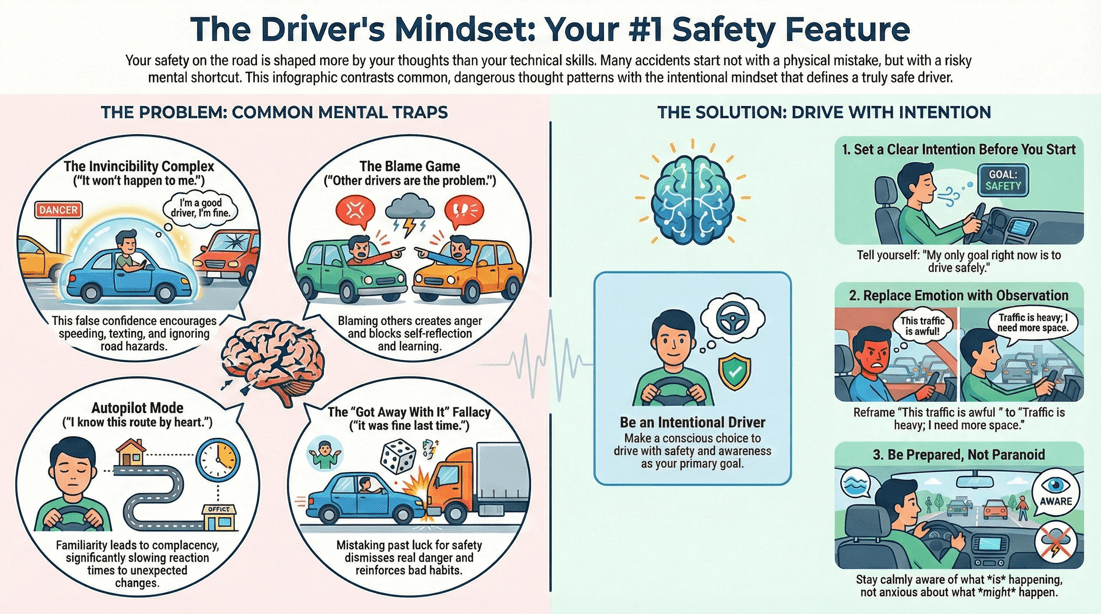? How can I change my driver thinking pattern for the better?
Changing your driver thinking pattern for the better starts with one key principle: drive with intention, not emotion or assumption. Safe driving is as much about mindset as it is about skill. Here’s how to shift your thinking into a calm, alert, and responsible frame of mind every time you’re behind the wheel:
1. Start Every Drive with a Clear Intention
Before starting the engine, pause and set your mental tone. Tell yourself:
“I’m here to drive safely, not to win, rush, or prove anything.”
This short internal reset helps prevent impulsive or emotionally charged reactions on the road.
2. Stay Present, Not on Autopilot
Even familiar routes deserve your full attention. Remind yourself regularly:
“Things change—stay alert.”
Use cues like red lights or stop signs to consciously check back in with your surroundings.
3. Challenge Negative or Reactive Thoughts
If you catch yourself thinking, “This driver is so slow,” reframe it as:
“They might have a reason. I’ll keep my distance and stay calm.”
This avoids spiraling into frustration or aggressive behavior.
4. Replace Emotion with Observation
When stress rises, shift from feeling to noticing:
Instead of reacting with, “This traffic is ridiculous!” try, “Traffic is heavy—I’ll give myself more space and time.”
5. Use Mistakes as Mental Reminders
If you zone out or make an error, don’t beat yourself up. Use it as a moment to recommit:
“That was a slip—I’m back in focus now.”
6. Practice Gratitude for Smooth Drives
When you arrive safely, acknowledge it.
“I stayed calm and aware today. That matters.”
This reinforces the value of good habits and builds a positive association with safe driving.
7. Visualize Handling Problems Well
Before you drive, imagine calmly responding to a sudden stop or an aggressive driver. Mental rehearsal makes it easier to stay in control when it really happens.
8. Watch Your Inner Dialogue
What you say to yourself matters. Trade thoughts like “I need to get ahead” for “I need to get there safe.”
Your mindset shapes your behavior—choose words that reinforce patience, focus, and control.
Final Thought
Good driver thinking patterns aren’t about being perfect. They’re about being aware, adaptable, and grounded every time you drive. With small, steady shifts in mindset, you’ll reduce stress, avoid unnecessary risks, and feel more in control—even when the road isn’t.
⧋
🡄 Previous Page Next Page 🡆





